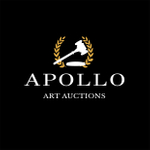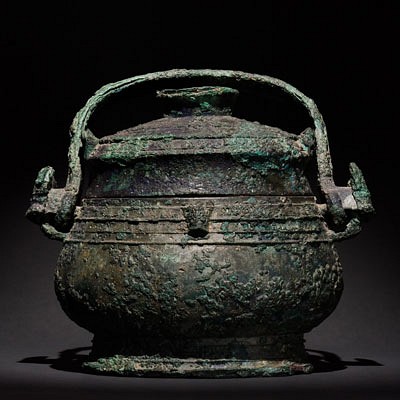CHINESE HAN DYNASTY DECORATED MIRROR
Lot 47
Categories
Estimate:
GBP£600 - GBP£900
$810.81 - $1,216.22
Absentee vs Live bid
Two ways to bid:
- Leave a max absentee bid and the platform will bid on your behalf up to your maximum bid during the live auction.
- Bid live during the auction and your bids will be submitted real-time to the auctioneer.
Bid Increments
| Price | Bid Increment |
|---|---|
| GBP£0 | GBP£1 |
| GBP£10 | GBP£5 |
| GBP£100 | GBP£10 |
| GBP£200 | GBP£20 |
| GBP£500 | GBP£50 |
| GBP£1,000 | GBP£100 |
| GBP£2,000 | GBP£200 |
| GBP£5,000 | GBP£500 |
| GBP£10,000 | GBP£1,000 |
| GBP£20,000 | GBP£2,000 |
About Auction
By Apollo Art Auctions
May 2, 2021
Set Reminder
2021-05-02 08:00:00
2021-05-02 08:00:00
America/New_York
Bidsquare
Bidsquare : The Art of Ancient Asia
https://www.bidsquare.com/auctions/apollo-art-auctions/the-art-of-ancient-asia-6802
From TL Tested Chinese Terracotta to exquisitely carved Gandharan statues; and Greco-Bactrian Silver and Sassanian Bronze. Find the ancient artefacts of the Indus Valley and travel through time to the Crusader Era Seljuk Terracotta. Apollo Art Auctions enquiries@apolloauctions.com
From TL Tested Chinese Terracotta to exquisitely carved Gandharan statues; and Greco-Bactrian Silver and Sassanian Bronze. Find the ancient artefacts of the Indus Valley and travel through time to the Crusader Era Seljuk Terracotta. Apollo Art Auctions enquiries@apolloauctions.com
- Lot Description
Ca. 206 BC - 220 AD. Han dynasty. Bronze Mirror decorated with facing dragon and other animals. The central hemispherical boss framed by a concave square frame set with seven small bosses alternating with animal figures, the broad rim is decorated with a linear relief. The Han Dynasty, which ruled between 202 BC - 220 AD, brought great prosperity and stability to China, reigning over a golden age of classical Chinese civilisation during which China saw major advances including the widespread development of a monetary economy and the invention of paper, as well as much progress in the decorative arts. As early as 2000 B.C., bronze technology was highly developed in China, and objects made from this alloy of copper, tin, and lead were considered luxury items, reserved for the aristocratic class. Among these coveted pieces were small bronze mirrors. Usually cast from clay moulds, they were highly polished on one side, offering a reflective surface, while the other side was decorated with intricate patterns and designs that reveal an astonishing level of skill and artistry in their craftsmanship. Birds, dragons, and serpents were common motifs in the earliest mirrors. Later, more sophisticated and intricate designs included mythological figures, deities, animals of the Chinese zodiac, abstract patterns, background textures, inscriptions, enamelwork, and inlays of jade, turquoise, and mother-of-pearl. Provenance: From an old British collection of Asian Art formed in the 1990 on the UK and European art market. Size: L:180mm / W:180mm ; 800g
- Shipping Info
-
We offer in-house packing and international shipping at discounted rates.
-
- Buyer's Premium



 EUR
EUR CAD
CAD AUD
AUD GBP
GBP MXN
MXN HKD
HKD CNY
CNY MYR
MYR SEK
SEK SGD
SGD CHF
CHF THB
THB
















